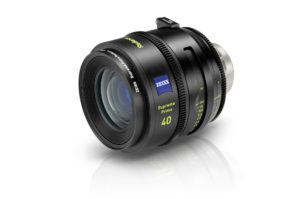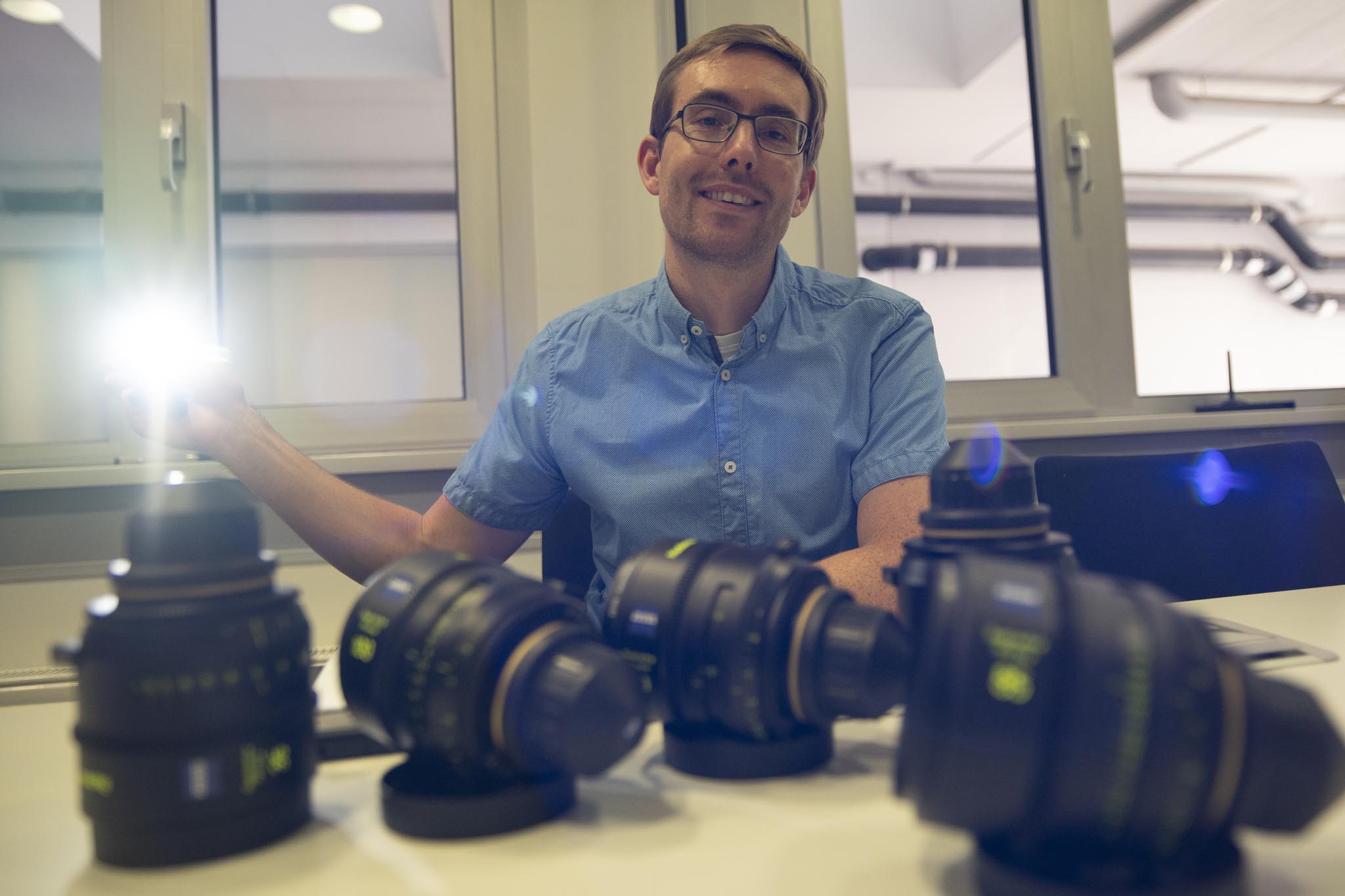And now there are 11.
Initially, 7 ZEISS Supreme Prime Radiance (SPR) lenses were introduced in June 2019.
Inevitably, cinematographers asked for more.
Now, just short of 2 years later, ZEISS introduced 4 more Supreme Prime Radiance lenses.
 Imagine ZEISS planners and designers sifting through all the requests. Ultimately, they made careful choices. Go wider and longer: 18 mm and 135 mm. Add a 40 mm because that has been a favorite focal length of many DPs, including Gordon Willis. But wait, Godfather was Super35. Doesn’t matter, SPRs are as beautiful in Super35 as in Full Frame. Quick math: what is the approximate equivalent of a 40 mm Super35 prime in Full Frame? Of course, 65 mm, another all-time mid-range favorite. That may not be how it happened. We’ll find out.
Imagine ZEISS planners and designers sifting through all the requests. Ultimately, they made careful choices. Go wider and longer: 18 mm and 135 mm. Add a 40 mm because that has been a favorite focal length of many DPs, including Gordon Willis. But wait, Godfather was Super35. Doesn’t matter, SPRs are as beautiful in Super35 as in Full Frame. Quick math: what is the approximate equivalent of a 40 mm Super35 prime in Full Frame? Of course, 65 mm, another all-time mid-range favorite. That may not be how it happened. We’ll find out.
ZEISS Supreme Prime Radiance lenses artistically emphasize ghosting (flares). They are consistent across the entire set. They are based on Supreme Primes but have a warmer color tone. And no, they are not simply the same Supremes with coatings removed. There is no loss of light and no uncontrolled “white-out.” Instead, Radiance Primes have newly formulated T* Blue coatings. While there are 13 focal lengths in a set of Supremes, there are now 11 Radiance Primes, from 18 to 135 mm, all T1.5.
ZEISS Supreme Prime Radiance Specs
Consistent and controlled ghosts
The following interview about the development of ZEISS Radiance Primes was first published by FDTimes in December 2019, Issue 98. It has been edited and updated.
Jon Fauer: How did the concept for ZEISS Supreme Prime Radiance lenses begin?
Christophe Casenave: When we introduced Supremes, some users said, “You are going in the right direction. They have a newfound character. They have a nice, gentle sharpness. But there’s something still missing. How do we flare them when we want to? Please give us even more flares (ghosts).”
Jon: What was your mandate for these lenses?
Dr. Benjamin Völker: We had just finished working on the Supreme primes in April 2018. I remember Christophe came to me after he showed them to some rental houses and they asked for more ghosts.
Christophe: The same lenses, but with a bit more flare or ghosting. I thought we could just put some uncoated surfaces on the front or rear element and we’ll have a flare set.
Benjamin: But I didn’t agree with that. From my perspective, one of worst things you can do in a situation like this is a flare set. When you’re confined to certain elements—front or rear—that you change, the shape of the ghost is fixed. And if you’re trying to uncoat the glass, the ghosts are white. It destroys your contrast. It’s completely uncontrollable. You lose not only contrast but you also lose light. We had just finished designing excellent T1.5 Supremes. To then omit coatings on a few elements would result in losing a lot of light and all that nice contrast.
Christophe: That is an important thing. He refused. What did we do then?
Benjamin: I wanted to introduce ghosts in controllable shapes and colors and avoid the typical white haze and loss of light. I knew that there was demand for certain vintage lenses, but as a designer, I didn’t exactly know why. We looked at around 25 different lens sets popular in Hollywood. They included K35, Baltar, Super Baltar Canon FD, Kowa anamorphics, Kowa sphericals, ZEISS Super Speeds and a bunch of others. We talked to DPs and staff working at rental house.
Christophe: Benjamin worked the way a good product manager would work in any industry. Don’t ask the customers what they want and then you do it. The customer would tell you, “I want uncoated lenses.” No. You ask the customer, “Tell me your problem, tell me what you want to achieve. And we will then work on the answer.” Benjamin acted not only as a product manager, but also as an artist. He designed something beautiful.
Jon: What was the design concept?
Benjamin: The basic idea was to add ghosts—controllable, but not too much. That’s really hard to achieve. Getting rid of ghosts completely is easy. Introducing them massively by doing uncoated elements is also easy, no work at all. But to find that certain level takes a lot of effort. And the other thing people always told us was they would prefer a bit of a warmer color rendering. So I tried to find a way to introduce all that at the same time and not to lose any light (because you lose about 1/3 of a T-Stop for every uncoated surface.)
Jon: Are all the elements treated this way?
Benjamin: No. We identified the surfaces that contribute the most to ghosting. A ghost originates from two surfaces. If you change the coating on those two surfaces, then the surfaces of all the other elements may be affected. The hard thing is to find the exact locations in the lens that are sensitive to the style that you want to add.
Jon: How did you get the color rendition warmer?
Benjamin: We developed a new T* (T-Star) Blue coating. It’s our new way of introducing a coating onto the lens element that gives you bluish ghosts and at the same time gives you a warmer color rendering. If you take away blue light from the spectrum and use that for the ghosting, at the same time, your color rendering gets warmer. However, you have to be careful not to introduce a green or magenta color tint. Actually, it’s a bit more complicated than that.
Jon: So if you see blue flares, that generally makes the picture warmer?
Benjamin: Not necessarily. It’s a combination of the light absorbed by the glass and the light reflected by the coatings.
Jon: How would you describe the style of these lenses to a DP?
Benjamin: The Supreme Prime Radiance lenses show a controllable blue-colored ghosting that will not destroy your contrast. Less contrast is lost than with a typical flare set. Radiance lenses are more versatile because you can use them throughout an entire production. If you don’t want flares, you can just flag the light. You still retain the slightly warmer color. You do not lose light. The maximum apertures of the Supremes and the Radiance are the same, T1.5.
Christophe: The Supreme Prime Radiance allow DPs to add character to their images, with consistent and controlled ghosts, without fear of uncontrolled aberrations or controlled retribution from disappointed producers.
Benjamin: It was really about picking the elements we wanted to ghost and putting a specialty coating on them while adding strong anti-reflective coatings on the surfaces that we didn’t want to have ghosts. Furthermore, we treated the Radiance Primes as a family. They needed to have very similar ghosting for all focal lengths. That was actually one of the hardest parts of the job: to achieve a comparable level so the ghosting behavior of a 135 mm tele lens would be the same as an 18 mm wide angle.
Jon: You call them ghosts and we DPs call them flares. Please explain.
Benjamin: For me, a ghost is a reflection between two optical surfaces that gives you a more or less sharp image of that reflection on the image sensor. Flare for me is more like stray light on mechanical parts like the inside of the lens barrel. I know that we use these words almost interchangeably among DPs and developers and we are not even consistent.
Jon: We DPs also talk a lot about character. What is character?
Benjamin: It is, in some way, a kind of imperfection that you introduce so that your image is not clinically clean and you have to interpret imperfections that add emotion to the image.
Christophe: Let’s say I am sitting in the front row of the cinema and I’m watching the images on screen. I don’t want to see the same reality that I can see outside the theater. I do not want to see images so perfect that I would bump into the screen if I walked on stage. As a spectator, I think we appreciate everything that helps us consciously or unconsciously to step away from reality. A ghost from the lens is really a part of that disconnect from reality. As soon as I see a ghost, I say it has been painted by someone. It’s not part of the reality.
Benjamin: You can use ghosts as a stylistic element. If you have a really bright light source and you film it, often that light source clips. You don’t really have a perception of how bright it actually is because of the sensor’s limitations. But with a ghost, you get a feeling that this light source is really bright.
Jon: Can you give us a lesson as to the different possibilities that we have with this set of lenses?
Benjamin: If you want to increase the ghosting, bring the light source to the center. The further you move from center to the edge of frame, or even outside of frame, the ghosting will diminish, but it will not completely vanish. If you’re outside the field of view, there’s an area where you still get a controllable ghosting within the frame. And if you want to get more pronounced ghosting, then begin stopping down. The ghosting will become more structured once you stop down. And it becomes a bit softer when you open the iris up completely.

Benjamin Hagen, Marketing Project Leader of Cinematography Products, confronting his ghosts at ZEISS headquarters in Oberkochen. Taken with 50 mm ZEISS Supreme Prime Radiance.


















Very informative article as always. About to start a project using both versions of these lenses. Thank you.